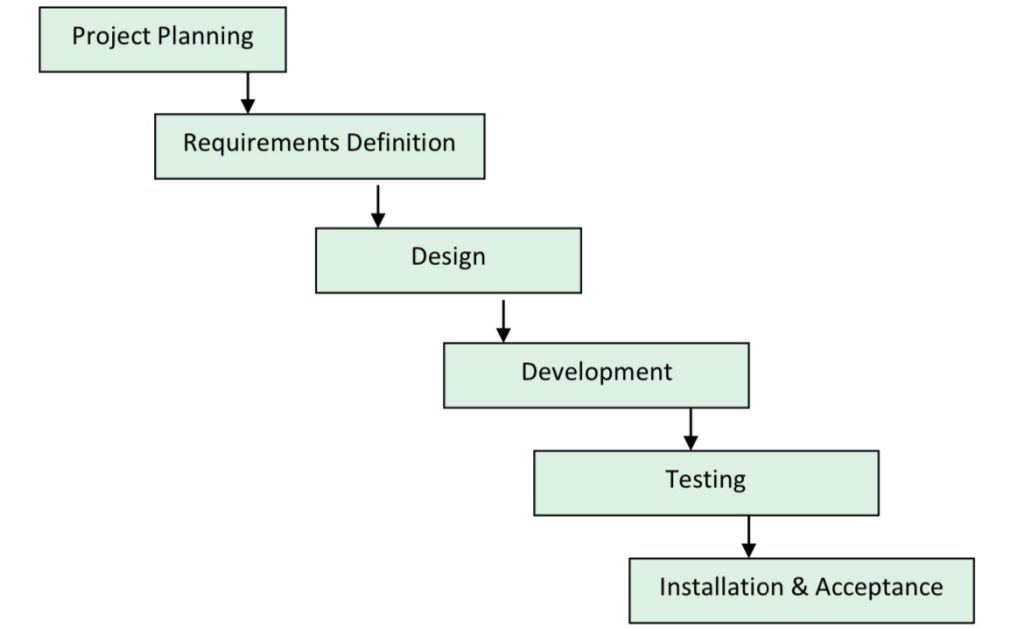Life Cycle of Database Development
Databases optimize routine processes and increase productivity by collecting all useful information in one place.
Quick Links
Like any process, database software development is divided into several stages, each of which addresses one specific aspect, which increases the efficiency of the work as a whole.
Accordingly, the software development life cycle has the following phases:
Identify requests and analyze the whole situation
One of the most important steps that must be done very carefully is to find out all the requirements.
At this stage, the client sets an exact task with an indication of the scope of work, the desired unique features and the price. Further, all this information turns into a project creation plan, which is important to draw up correctly without missing a single detail, so that the result and the customer’s expectations are justified.
The database designer must learn how the operating systems and components of the company interact with each other, as well as check the viability of all functions.
The process of identifying vulnerabilities is very painstaking. It can be extremely difficult due to the client’s inability to identify their weaknesses.
Read here more about custom development.
Design the system
The next stage of the life cycle is when it comes time to develop and design the database model.
- Logical database design
At this stage, an attempt is made to implement the plan, taking into account all the requirements, problems and desired improvements.
- Physical database design
This phase is responsible for the characteristics of the data storage.
At the end of this juncture, the developer must provide the customer not only a detailed project architecture but also logical diagrams that prove the database’s ability to turn raw information into useful data.
Implementation and loading
The third phase includes a series of instructions detailing everything with respect to the tables and their functions in general, as well as recommendations for the use of storage, security and other external systems. The developer is also responsible for loading, importing or converting data into database tables.
Testing & Evaluation
The beginning of the testing phase involves checking the operation of the program and its performance. The developer tests the database, improves features, fixes bugs, and tunes the database as a whole. After testing, the database becomes a holistic tool that provides security, reliable storage, encryption and fast access.
Moreover, backups and restores must be tested too.
Operations
Here the database is considered to be a working tool accessed by the end users. At this stage, there is an addition, deletion or change of existing data, and all the documentation associated with the files is transferred to the customer. From that moment, the system begins to work and turns into a powerful business engine.
Maintenance
After the database is started, the maintenance phase begins. At this stage, the database must be updated and maintained on demand. Furthermore, this process may include the following mandatory work:
– Backup
– Correction
– Intervention on demand (adding features, improving performance)
– Manage access for different users

Why does your business need software development services?
Due to the fact that now many companies are moving to online platforms, the amount of data is growing very quickly. Many people are moving to a remote work environment, so to ensure convenience, it is worth contacting database development services.
Other reasons exist if you are interested in:
- customer data
- personnel data
- tracking the inventory
- relationship management
Conclusion
Businesses of all sizes should pay attention to such an important tool in business as a database. This tool increases productivity and improves several aspects of your company at once. A team of professionals can make the best software that will make your work more comfortable and successful.
Top 10 Magento 2 SEO Extensions to Boost Your Store’s Visibility
SEO is the key to a successful store! Have you ever given thought, if your store is simply…
0 Comments12 Minutes
How to Optimise Your PPC Campaigns with AI
As the methods of Internet marketing evolve, Pay-Per-Click (PPC) advertising remains one of the…
0 Comments10 Minutes
Putting Cybersecurity Under the Spotlight: How Security Audits Strengthen Your Defenses
While organizations understand the importance of cybersecurity, there is an opportunity for many…
0 Comments12 Minutes
How Marketing Agencies Can Choose the Best High-Performance SEO Tools
High-performance SEO tools combine comprehensive features, durability, speed, and accuracy. They…
0 Comments9 Minutes
Simplify the Running of Your Business With These Tips
Finding enough hours in the day to tackle all the jobs on your to-do list can be a major issue…
0 Comments4 Minutes
Best SEO Practices for Multi-Location Businesses
Businesses operating across multiple locations benefit from unique opportunities but also face…
0 Comments7 Minutes
Unveiling the 7 Essential Components for an Exceptional Website
Even a beginner can identify what makes a good website, but when it comes to building one, things…
0 Comments8 Minutes
Top Blockchain Trends to Watch in 2024
Blockchain has time and again proved its capacity to redefine many sectors and this prediction of…
0 Comments6 Minutes








